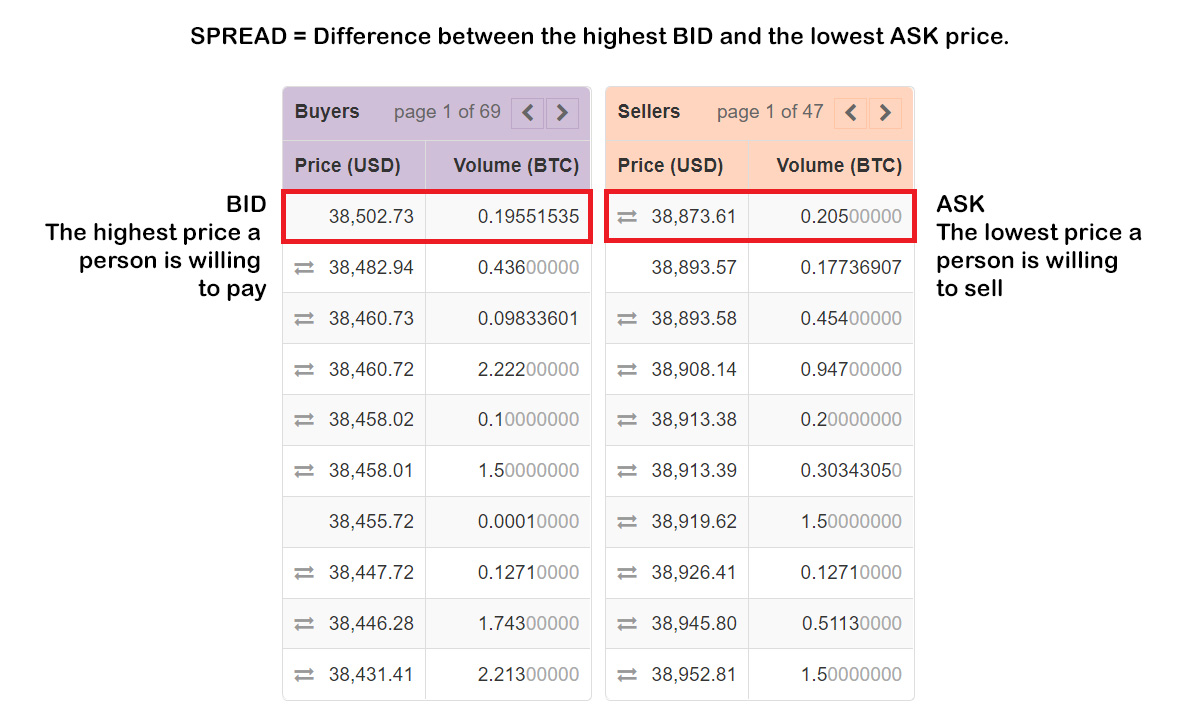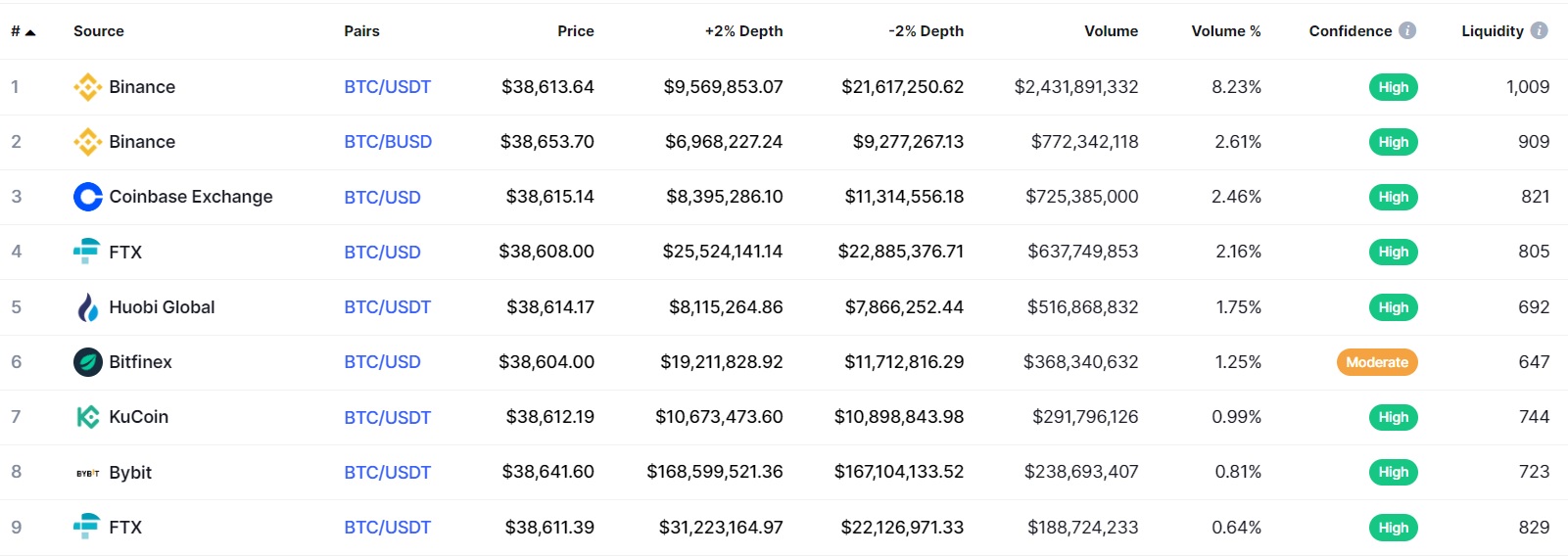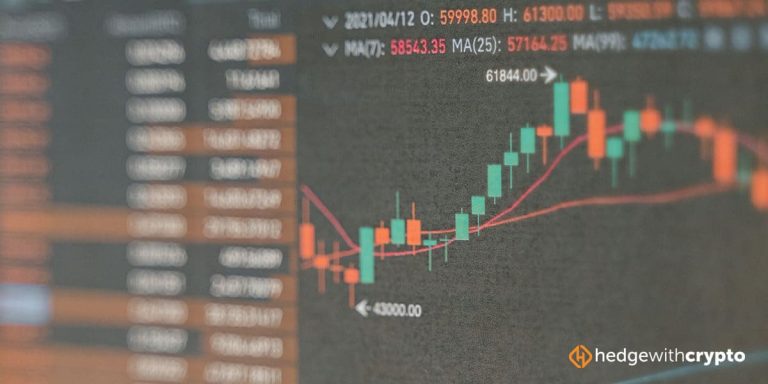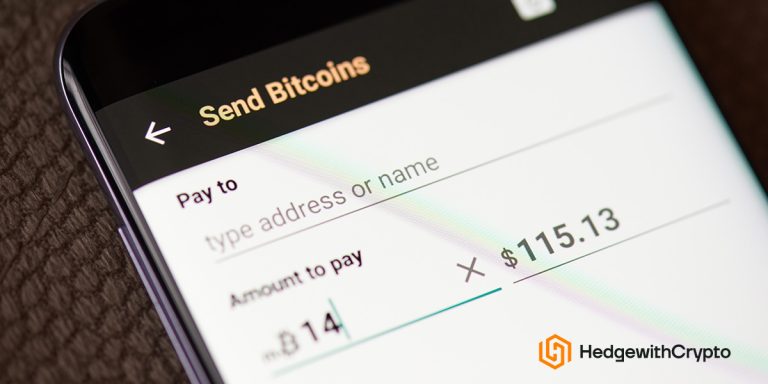What Is Spread In Crypto Trading & How It Impacts Your Profits
Key Takeaways:
- A crypto spread refers to the difference between the lowest asking price and the highest bid price for a digital currency.
- Spreads exist due to inefficiencies between buyers and sellers in the market and are exacerbated by a lack of liquidity on a crypto exchange.
- Lesser-known altcoins and tokens typically have higher spreads due to a lack of liquidity and trading volume.
TABLE OF CONTENTS
Cryptocurrency traders can be completed using the spot markets, or by using derivatives such as futures and options. While the underlying mechanisms behind each of these products are slightly different, all markets involve something known as “Spread”.
Often considered a “hidden fee”, trading spreads in crypto are the difference between willing buyers and sellers and are an essential cost to understand that can impact the realized profit and loss of a trade. This article will explain why spread exists, how it works, and its impact on a trading strategy.
What Does Crypto Spread Mean?
Crypto spread is defined as the gap between the highest price someone is willing to pay and the lowest price someone is willing to sell a cryptocurrency asset. These two defining points are often referred to as the bid and ask price. All of the asks and bids for a market are collated within an order book, which is a digital list of all the buy and sell orders for a specific asset such as Bitcoin.
- Ask. The lowest price someone is willing to sell
- Bid. The highest price someone is willing to pay

Why Do Crypto Exchanges Have Spread?
All markets whether it be a traditional financial instrument or cryptocurrency involve a collection of buyers and sellers that are willing to buy and sell an asset. Exchange platforms are used to bring together willing buyers and sellers to exchange and trade digital assets.
Each buyer and seller will often have a specific price in mind when it comes to executing a trade. A buyer wants to buy an underlying asset for a specific price. Likewise, each seller wants to sell an underlying asset for a specific price. Therefore, an individual seller and buyer that can't agree on a sale price create a gap in price known as the spread. The spread is one of the many factors as to why crypto exchanges have different prices.
Why Does Spread Exist In The Crypto Market?
Spreads exist due to market inefficiencies between buyers and sellers on cryptocurrency exchanges. The difference between a buy and sell order usually exists due to a lack of liquidity within a market.
Let’s imagine that an investor is looking to sell 1 Bitcoin (BTC). They would like to sell the 1 BTC for $10,000 – the “ask” price. So far they have only come across 1 other investor that is willing to buy 1 BTC from them. However, the buyer is only willing to pay $8,000 – the “bid” price. The Spread in this example would be $2,000. The investor looking to sell would either have to accept the $8,000 bid offer or wait for another investor to offer a higher bid price.
This is how an order book on a cryptocurrency exchange works. However, there are thousands of people looking to trade at different prices with pending orders in the system which creates the order book depth. The more people there are, the more liquidity there is within the exchange's order book. As liquidity rises, the width of the spread becomes smaller and increases the chances to find a seller and buyer that agree on a price.
How is Crypto Spread Calculated?
Calculating the spread of an asset involves a straightforward subtraction. The highest bid price must be subtracted from the lowest asking price.
Spread = Lowest Asking Price – Highest Bid Price
Let’s look at an example. If the lowest asking price of Bitcoin was $22,000 and the highest bid price of Bitcoin was $21,300, the spread would be $700.
Spread = $22,000 – $21,300
= $700
Taking this one step further, Spread can also be calculated as a percentage to help compare the liquidity of different markets. A high percentage would suggest a low liquidity market whereas a low percentage would suggest a high liquidity market.
% Spread = Spread / Lowest Asking Price
% Spread = ($700 / $22,000) x 100
= 3.2%
Spread Difference Between Cryptocurrencies
Popular cryptocurrencies such as Bitcoin or Ethereum which boast a large number of adopters are highly liquid markets. There is a far greater number of buyers and sellers within the market, therefore, the spread for purchasing or selling these cryptocurrencies is usually small. For lesser-known altcoins and tokens, the spread is often wider as there is fewer people wanting to buy or sell the particular cryptocurrency on the exchange at their desired price point.
A quick way to find an exchange with the deepest liquidity for a cryptocurrency is Coinmarketcap which lists the top markets for each trading pair. For example, Binance, Coinbase and FTX have a more liquid market for BTC/USDT trading which will result in less slippage and spreads.
Related: What does slippage mean in crypto?

How Does Spread Impact Crypto Trading Strategies?
Understanding and appreciating the existence of spread is crucial when it comes to cryptocurrency trading. While some investors will account for the effect of trading fees charged by an exchange platform, the spread is often a forgotten expense that can eat into trading profits. This is particularly true of trading strategies that involve entering trades frequently.
While not a direct fee, the spread should be considered an implied fee as the effects are realized after the trade has been placed. Once a trade has been placed, the cryptocurrency has to appreciate to cover the trading fee and spread before a profit can be realized. Therefore, it is imperative to find liquid exchanges to reduce crypto transaction costs when buying or selling digital currencies.
An Example of Crypto Spread In Trading
If the highest bid offered for Bitcoin is $21,300 and the lowest asking price for Bitcoin is $22,000, the spread for the market would be $700 which equals a 3.2% spread. A person that wishes to purchase Bitcoin will pay $22,000 for 1 BTC which is the lowest ask available. To realize a profit, the investor would need to wait until the highest bid price increased to at least $22,000. Only if the highest bid price is above $22,000 would the investor be able to short Bitcoin for a profit.
If the highest bid only increased to $21,800, at the point of sale the trade would have lost $200 due to the market spread. Therefore, understanding the order book spread for a trading pair on a particular exchange is essential for frequent traders. Making several quick trades that involve a large spread can be costly to a trader.
To avoid high spreads, the trader may opt to use another exchange with deeper liquidity and therefore lower spreads. This can present an opportunity for cryptocurrency arbitrage traders that can benefit from different prices of the same asset that is trading on another exchange. For further information, read this article that explains arbitrage trading strategies and whether they are profitable in the crypto market.
Can The Spreads In The Crypto Market Be Manipulated?
The highest bid and the lowest ask price are not always defined by buyers and sellers within a market. Often platforms that provide liquidity become the counterparty in trades also known as ‘market makers'. This is particularly true for illiquid markets.
If a market is illiquid, with a small number of buyers and sellers, market makers which could be large financial institutions with significant capital or an exchange platform can offer to complete the other side of all orders. Trades can be executed instantly, without needing to wait for a counterparty to accept an offer. As a result of taking on the risk of buying or selling assets, a market maker can implement an artificial spread which can be seen as influencing the prices.
Market makers can offer a slightly higher market price to those wishing to buy (ask price) and a slightly lower market price to those wishing to sell (bid price). The difference between the exchange price quoted and the true market price is then recovered as profit. After millions of trades, profits can soon add up for market makers. These price differences are often small but will eat away at a trader’s bottom line if they are not aware.
Conclusion
Spread is a term that is frequently mentioned when trading cryptocurrencies but not all traders may be aware of how it can affect a trading strategy. Defined as the difference between the highest bid price and the lowest asking price, spread can quickly eat into profits if not appreciated.
It is important to calculate the spread before entering a trade or using a liquid exchange. Determine the percentage spread to compare the liquidity of different markets and allow for the price to move across the Spread before realizing a profit. For a lost-cost solution, it may be best to stick with the top-shelf crypto trading platforms that have high trading volume and liquidity. To find out what is considered high trading volume in crypto, read this article next.



